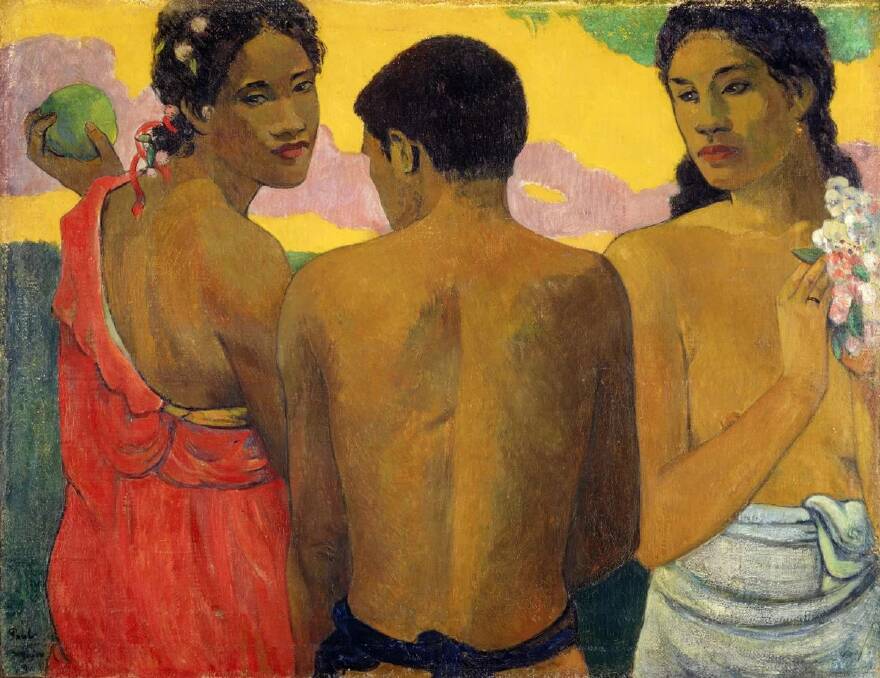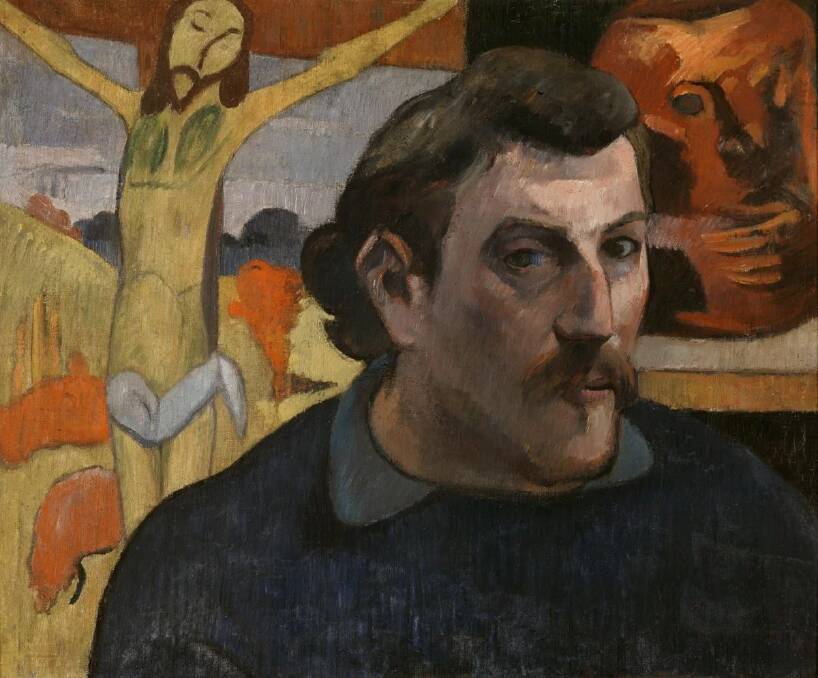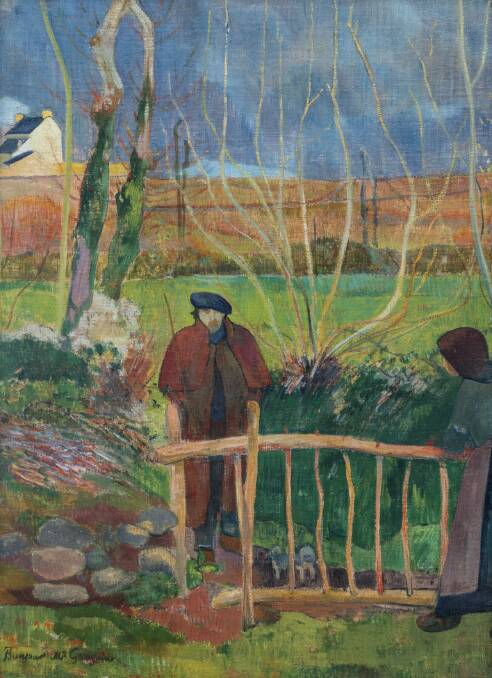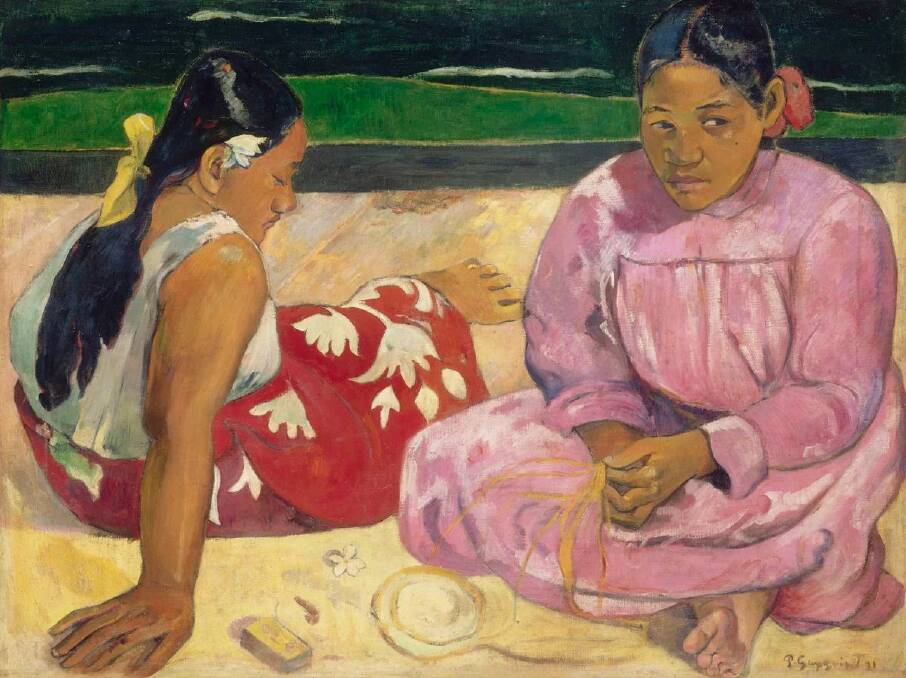Discover the world of Paul Gauguin in extraordinary Canberra exhibition

This is branded content for National Gallery of Australia.
For many weeks now a buzz of excitement has been building at the National Gallery of Australia (NGA) as the art works of one of the world's most famous artists, Paul Gauguin, arrived from their usual homes around the world.
More than 65 leading public and private lenders from as far as the United Kingdom, France, Japan, Sao Paulo and Abu Dhabi have shared their Gauguin collections to create what will be the largest exhibition of the artist's work to be presented in Australia. Many of the works have never been exhibited here before.
Significantly, the exhibition, Gauguin's World: Tona Iho, Tona Ao, brings together the art works and a range of other elements in a deep exploration of the French artist's journey from his Impressionist beginnings to his final destination, in the Marquesas Islands in French Polynesia.
"It's very exciting to see these works in our part of the world," said NGA's curator of international art, Dr Lucina Ward. "Gauguin's work is in great demand - he's one of those artists everyone wants to see. Bringing so much of his work together from so many collections around the world to Canberra is extraordinary. It is huge.

"It's a very rare opportunity for people to experience these works all together - there are more than 130 paintings, drawings, and sculptures - and to get insights into the art and life of Gauguin, his impact and his legacy on the late 19th century and 20th century."
The utmost care was needed to ensure the safety of the works as they made the long-haul journey. To manage the risk, the works have been coming in a series of shipments, most travelling with a conservator or curator from the originating museum.
"Canberra is one of the most complex and often furthest away venues that many of our colleagues can come to," said Dr Ward. "We don't have many direct flights and when you're dealing with 65 lenders from all over the world, just the shipment schedule is very complex.
"Sometimes there are layovers between flights there are periods when a work has to be put in security storage between flights and then most often there's a truck trip at the end to bring the work from Sydney or Melbourne. It's huge but that is part of the excitement of bringing the exhibition here."
An exhibition for contemplation
Dr Ward said while the art works are at the centre of the exhibition, the wider program aims to provide a comprehensive understanding of Gauguin's work and life, including how it is viewed through a contemporary lens, and from the perspective of Australia's Moana/Pacific neighbours.
"While we celebrate Gauguin's work and his links to the Pacific region, we needed to acknowledge that he has a complex legacy; he was a pretty rotten individual in many respects and behaved badly certainly in 21st century terms," she said.
"We can't change history so we have approached museums, artists, community members in Tahiti and in the Marquesas Islands and invited people to be involved in the project. It's inviting a conversation."

In the exhibition, Gauguin's life, art and the controversial aspects of his legacy are explored through talks, public programs, a podcast series and films, as well as a display of a collection works by contemporary artists from the Pacific and further afield.
A highlight is the SaVAge K'lub, a celebration of all forms of art and culture, that's being presented alongside Gauguin's World: Tona Iho, Tona Ao. First conceived by artist, activist and scholar Rosanna Raymond in 2010, this latest iteration sees her collaborate with Tahitian artists.
Painting with light
That the exhibition will mark the return to the South Pacific of many of the works Gauguin created while living in French Polynesia is also exciting for lovers of his work. The natural environment and the light in this part of the world inspired Gauguin to use an entirely new palette of brilliant colours European audiences hadn't experienced before.
"In Australia we are are very used to living where the light is stronger and the colours seem more intense but Gauguin's eyes were opened by that when he travelled to the South Pacific," said Dr Ward.
"I find it really fascinating to consider Gauguin's knowledge of optics. Like many other artists of this time he was learning about the structure of the eye - he had a very strong knowledge of simultaneous contrasts, which means putting reds adjacent to green it makes the red seem redder and the green seem greener."

'So it's exciting to see the works here, in this part of the world, for all sorts of reasons but that knowledge that Gauguin had brings even more admiration."
Tahitian cultural knowledge holder Tahiarii Yoram Pariente - who was invited by the National Gallery to perform a ceremonial Karakia to prepare for the exhibition - said having the paintings here meant he could see the colours that "are only possible in this part of the world".
"I think to have the works coming back here is going to bring us the shine that our sun and nature gave to those paintings in those days," he said.
Gauguin's World: Tona Iho, Tona Ao opens at the National Gallery of Australia on June 29. For tickets and more information visit nga.gov.au/exhibitions/gauguins-world/#About


